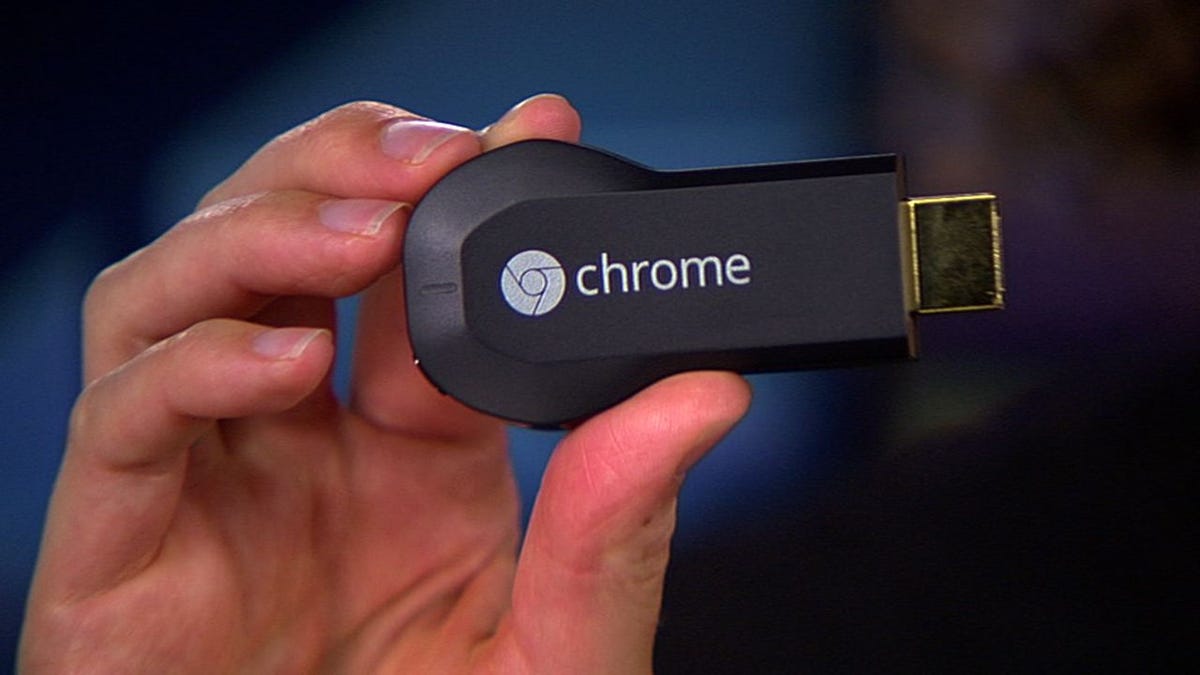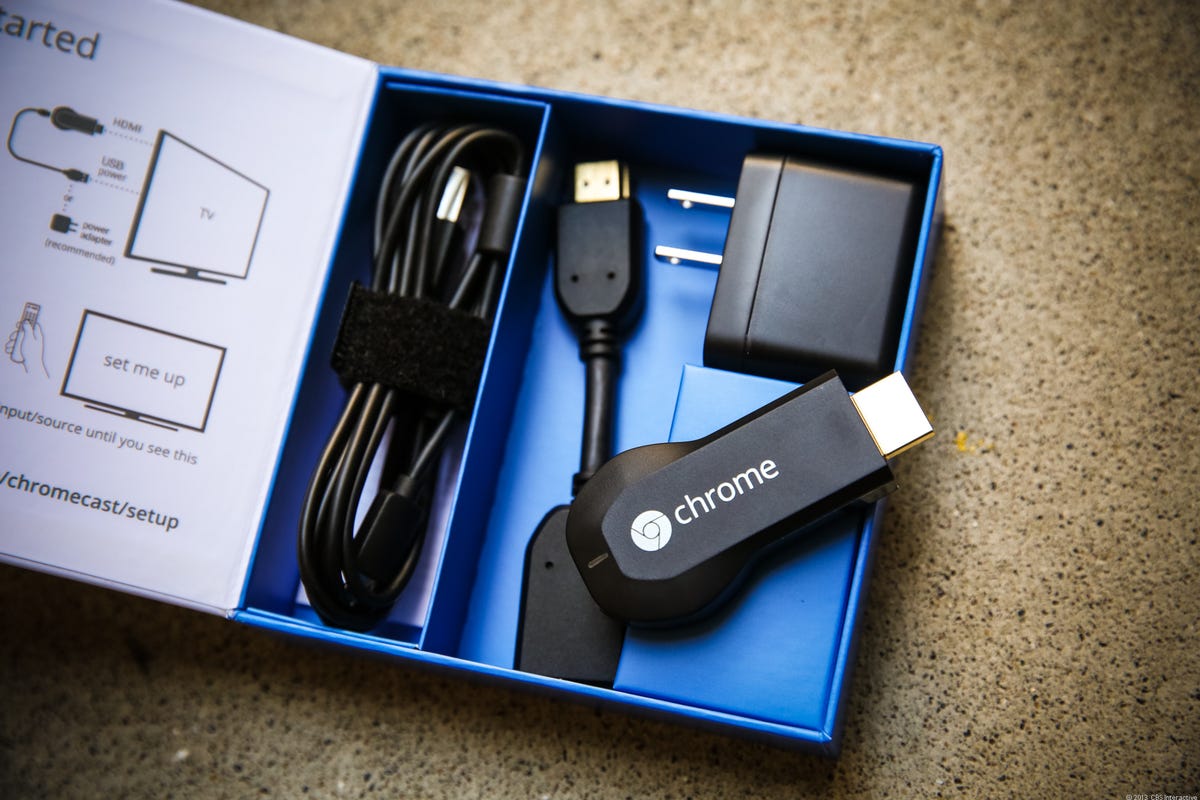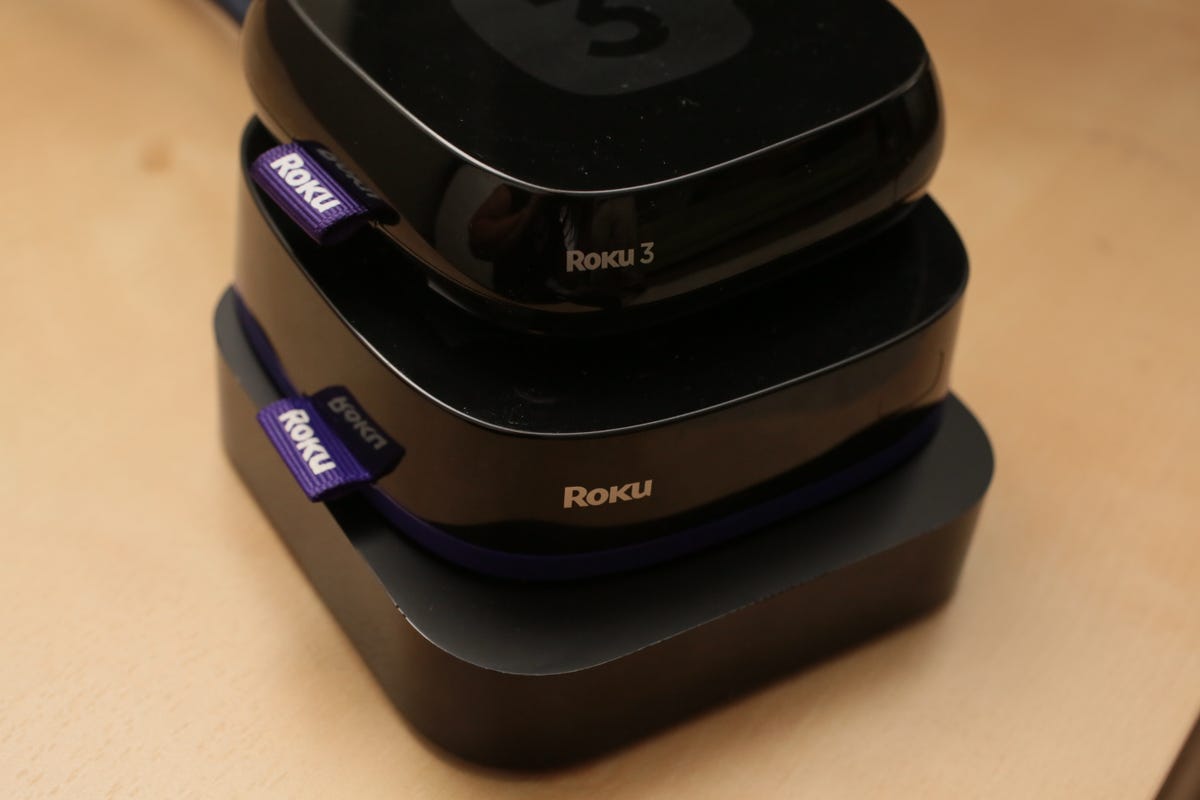
Google today announced a $35 streaming-TV dongle called the Chromecast, and everyone promptly went nuts.
The product sold out almost immediately. For a while, the Chromecast coverage was the most popular content on CNET — surpassing interest even in the newly announced (and very promising) Nexus 7 tablet.
Headlines from Business Insider (“Google announced a brand-new Apple TV-killer…”) and the Huffington Post (“Chromecast is Google’s $35 Apple TV and Roku killer”) summed up the techie conventional wisdom, which was echoed widely on Twitter.
A look at Google’s Chromecast (pictures)






As usual, it’s not quite that cut and dried. Yes, this is a promising device (you can see our initial thoughts; look for a full review very soon). But it’s not quite a full replacement for the two current top dogs of streaming video: Apple TV ($100) and Roku (which ranges from the $50 Roku LT to the $100 Roku 3).
Of course, at just $35, it really doesn’t have to be.
The Chromecast’s weak points
It only works with four apps for now
Plug in the Chromecast, and you can use a wide variety of devices — Android and iOS devices, Windows PCs, Macs, Chromebooks — as remotes to access YouTube, Netflix, and Google Play (TV shows, movies, and music from Google’s store), as well as to mirror any open tab in Chrome. Pandora was promised as “coming soon.” But Amazon, HBO Go, Hulu Plus, and iTunes (just to name a few) aren’t specifically available. (Though some may well work with the Chrome mirroring function; we’ll be testing that first thing.) In other words, the Apple TV’s handful of killer apps and Roku’s stable of several hundred channels — none of which requires you to mirror from external devices — still win on content.
Unlike AirPlay, universal support is not (yet) baked into nearly all apps
We’ve long said that the Apple TV’s killer feature is AirPlay (and AirPlay screen mirroring). The Chromecast’s ability to mirror pages from the Chrome browser seems to mimic AirPlay almost perfectly. But the difference — at least on iPads, iPhones, and iPod Touch models — is that AirPlay streaming is integrated on an OS level.
Related stories
- Google’s $35 Chromecast stick pushes Netflix, YouTube to your TV
- Google’s new Chromecast dongle plays hard to get
- Google TV: We’re not dead (yet)
That means that nearly all apps can stream audio to an Apple TV at the touch of an icon in the volume bar; many (but not all) apps can stream video as well. So, you can effortlessly stream Spotify (for instance) from your iPhone to your Apple TV, but those same apps on an Android device won’t automatically be streamable to the Chromecast. (That could change soon, however, as Google has already released an SDK — software development kit — to help app makers do just that.)


James Martin/CNET
The plug-and-play dongle still needs a power source
Google showed the Chromecast as a plug-in stick, similar to a USB drive. In fact, most TVs will need the unit to use a separate power source. While that power source may be a USB port on the TV itself, it’s still one more wire to worry about.
Most TVs have only two or three HDMI ports — and they’re probably already full
Do you have room to park this thing? If you’ve already got a cable box, game console, or disc player, your TV’s HDMI inputs may already be occupied. Sure, you can swap things out or get an HDMI switcher, but that’s going to add complexity and expense.


Sarah Tew/CNET
Your Roku, Apple TV, game console, or smart TV already does a lot of this
Netflix and YouTube are arguably two of the most ubiquitous apps out there (although the latter is still, bizarrely, missing from Roku). If you’re already happy with the experience on those apps — some of which, as seen on the PS3, already have a “send to TV” mobile app component — do you really need the Chromecast at all?
Other companies have tried but failed on similar devices
This isn’t the first streaming dongle to hit the market. We’ve already seen devices like Plair’s that made many of the same claims — but didn’t live up to the promise.


Now playing:
Watch this:
Google Chromecast pushes videos to TV
1:44
On the other hand…
Indeed, the Chromecast’s role as a “killer” product is not set in stone. But to be fair — none of those issues mentioned above probably really matters. Here’s why.
Unlike AirPlay/Miracast/Intel WiDi, device support is universal
AirPlay only works with Apple devices and software (iTunes). Miracast is often mentioned as an AirPlay competitor, but it barely seems supported on any devices yet. And Intel’s Wireless Display — which lets newer Windows laptops mirror video content on a TV — is widely supported in many recent PCs, but has few compatible “receiver” devices. At least, none of the ones you really want. By comparison, Google is pledging Chromecast compatibility with Android phones and tablets, iOS devices, Macs, Windows PCs, and Chromebooks (or, at least, the high-end Chromebook Pixel). While BlackBerry and Windows Phone owners may fume, that’s a huge swath of the market — you’ll be hard-pressed to find a household without at least one of those supported devices.
Roku still doesn’t have YouTube
As mentioned ad nauseam: for reasons that remain unclear, Roku does not have a native YouTube app. (The Apple TV does.) There are workarounds — the Twonky app for Android and iOS does a great job of streaming YouTube content to the Roku, for instance. But if no YouTube is a deal killer (and it is for a lot of people), the Roku LT isn’t an option.
The Chromecast could get better, fast
Pandora is already on deck, and the aforementioned SDK implies — at least for Android devices — that native, AirPlay-style in-app streaming options could start appearing in many more mainstream apps. If that becomes the norm — at least for media apps — the fact that the Chromecast isn’t natively supported in the OS may not really matter.


James Martin/CNET
At just $35, all is forgiven
This is the big one: price. By delivering a wireless streaming device at $35, Google has effectively eliminated most caveats. It’s the exact opposite of what happened with the Nexus Q, the $300 streamer that Google announced last year, and then promptly discontinued. That unit, which scored a somewhat generous 2.5-star rating from CNET, did even less than the Chromecast, despite costing 8.5 times as much. At $300, the value proposition was near zero. At just $35, that the Chromecast is capable of doing even four things — if it works as advertised — seems near miraculous. And the fact that Google is throwing in three free months of Netflix — worth about $24 — lowers the “real” price of the device to more like $11. (Editors’ note: Just 24 hours after Chromecast’s launch, Google has apparently discontinued the Netflix deal. Meanwhile, CNET has posted our full review of the Chromecast.)
In other words, the Chromecast costs about as much as two lattes.
Sounds like a great deal.




